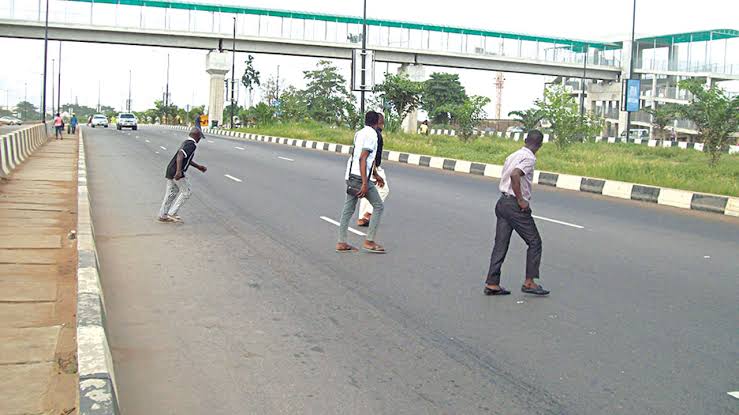A conspicuous feature of highways in the Federal Capital Territory (FCT) are pedestrian bridges. Given the ever busy nature of the roads, they are found in several parts of the city to aid residents crossing the highways without the risk of getting hit by cars. However, rather than make use of these infrastructures, some residents choose to risk their lives, dashing across highways in a game of wit to avoid being hit by fast-moving vehicles.
Many residents of the FCT have offered various reasons for the neglect of pedestrian bridges, including its relative distance from bus stops in some cases and the extra time required to complete the journey across.
Emmanuel Patrick, a resident of Gishiri told The ICIR that the bridge at NICON junction was quite a distance from the bus stop.
He said walking to the bridge, crossing, and trekking back to the bus stop took a lot of time and energy, as against simply dashing across the road.
“Looking at the distance from where I have to trek, then come down (from the bridge) before I get a cab, when you are late, you just have to take the risk,” he said.
Climbing the steps on the pedestrian bridge at NICON junction is a herculean task for Esther Onyeno, who resides within the area.
“The pedestrian bridge is too far. And the steps, if you climb the first one, you won’t like to climb it the next time. The steps are not spaced, and it is usually painful on the thighs,” she said.
In Abuja, most highways are usually divided by concrete barriers and barbed wires which serve as barricades against road crossing. However, some of the barricades were vandalized in many areas.
The FCT Administration had, thus, resorted to constructing stronger road barricades with iron fences in areas such as Wuye and Area 3.
At Area 3 junction, this construction is still ongoing, but this does not sit well with many residents and commuters.
Some could still be spotted crossing the expressway and jumping through the barriers despite the ongoing construction.

